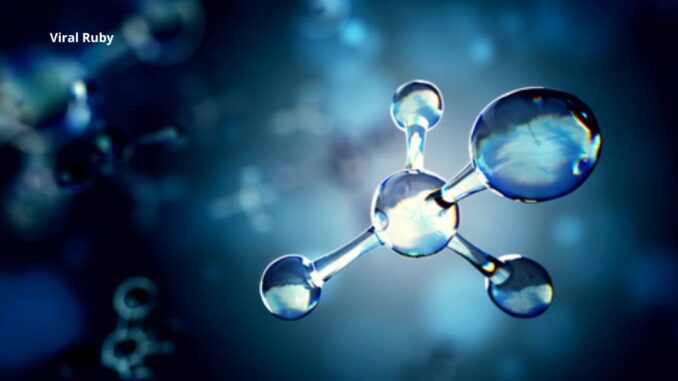
How Do Phospholipids Interact With Water?
Phospholipids are fats based on the glycerol molecule, which is a three-carbon alcohol. When they are described by diagrams, phospholipids appear as a bipolar molecule, with non-polar fatty acid tails avoiding water. But they also contain a polar fatty acid head that forms hydrogen bonds with water molecules.
How do phospholipids interact with water molecules?
Phospholipids interact with water molecules differently than other molecules. The hydrophilic head of the lipids orients itself toward the water, while the hydrophobic tails cluster together. These differences result in two different formations. When the lipids are in water, they will remain dissolved, while when they aren’t, they will form micelles and float to the surface.
For More: Best Pacifiers For Breastfed Babies UK 2022
Phospholipids are lipids that are made up of a phosphorus group and two or three hydrocarbon chains. Their hydrophobic tails are oriented in the interior, while their hydrophilic tails are in contact with water. This structure helps protect the phospholipids from water molecules. This is a similar mechanism to that of biological cell membranes. Phospholipids form two layers in a cell membrane. The hydrophilic phospholipid molecules form a lipid bilayer with an adjacent phospholipid monolayer, where the phosphate group is located on one side and the fatty acids are on the other.
Phospholipids form bilayers in aqueous solutions. The bilayer structure allows phospholipids to move more freely than water molecules because they are highly ordered. In addition, they also have strong affinities with other phospholipids, which leads to self-assembly.
Phospholipids have an electrostatic effect on water molecules. When the lipids are in water, they cause the water molecules to produce a positive electrostatic potential in the membrane. This compensates for the negative electrostatic potential created by the polar head of the lipid.
For Details: Distilled Water For Babies Walmart and Canada
Phospholipids form the outermost layer of the cell membrane and are important components. They contain oxygen, fatty acid tails, and glycerol. These molecules interact with water molecules to maintain cell health and function. They are not present in animal membranes. This interaction makes it very important to understand how the cell membrane functions.
Water molecules in an artificial membrane are investigated with ultrafast polarization selective vibrational pump-probe spectroscopy. The water molecules are 1 nm above or below the membrane surface and are in the OD stretching mode of dilute HOD in H2O.
In cell membranes interact with water molecules?
Phospholipids in cell membranes interact with water in two ways. First, the hydrophilic head of the phospholipid molecule orients itself toward water molecules. Second, the hydrophobic tails of the phospholipids cluster together to form an area that repels water. These two forces combine to form a bilayer, which is the cell membrane’s outer layer.
See More: Portable Food Heater For Buying Tips and Reviews 2022
Second, phospholipid bilayers have no free edges, meaning they have to close in on themselves. In addition, the phospholipids are scattered throughout the membrane. This bilayer structure helps to prevent a large number of molecules from passing through it. In addition, this structure also allows cholesterol and proteins to diffuse along the membrane. This bilayer structure is spontaneously formed in an aqueous environment, and it is self-sealing. This is due to the hydrophobic tail and hydrophilic head.
Phospholipids are the most abundant lipids in cell membranes. They are bilayers that contain two hydrophobic hydrocarbon tails. Each tail consists of 14-24 carbon atoms and has a hydrophobic and hydrophilic region. The length and shape of the tails affects their ability to pack against one another and the fluidity of the cell membrane.
MD simulations and Fourier transform infrared studies show that water molecules hydrogen-bond to oxygen atoms in the phospholipid’s polar head moiety. Likewise, polarization measurements show that the interfacial water molecules exhibit a net orientation. However, it has not been confirmed with a particular sample.
Phospholipid molecules have two types of tails: hydrophobic tails that are insoluble in water and hydrophilic tails that are nonpolar. Phospholipids in cell membranes are made up of bilayers of phospholipids that group together in micelles. The inner surface of micelles is hydrophobic, while the outer surface has a hydrophilic head. The hydrophilic head comes into contact with water molecules, while the hydrophobic tail is protected inside the bead.
Learn More: Royal Canin Hairball Cat Food 4KG and PetSmart
Phospholipids are a class of lipids that are built around glycerol, a 3-carbon alcohol. These lipids are often represented by diagrams and are classified according to their polar and nonpolar characteristics. Typically, the nonpolar tails of phospholipids are hydrophobic and avoid water. Conversely, the polar head makes the phospholipid hydrophilic, forming hydrogen bonds with water molecules.
How does phospholipids interact with water?
Phospholipids are molecules with hydrophobic tails and hydrophilic heads. The hydrophilic head is the part of the lipid that comes in contact with water, while the hydrophobic tail is the part that sticks up. When combined with water, they form a continuous bilayer.
Phospholipids form bilayers through two primary mechanisms. One is the formation of ionic bonds with aqueous solutions, while the other is a non-covalent interaction. These forces make a bilayer stable. When phospholipids dissolve in water, they can diffuse along the membrane.
Hidden Facts: Soul Food Delivery New York Las Vegas and Chicago
Phospholipids are formed through the esterification of a carboxylic acid with a non-polar fatty acid. The phosphate tails are hydrophobic, but the hydrophilic head is charged, so that it attracts polar water molecules.
In the body, phospholipids are important components of the plasma membrane. These membranes contain a protective layer, called the plasma membrane. Phospholipids are insoluble in water but soluble in alcohol and glycerol. They can also be classified into two classes: glycerophospholipids and phospholipids.
Although phosphate and choline associated bulk-like water are not identical, they do follow the same trend. Using population decay data, these models are generally in agreement. However, it is important to note that they do not adjust for structural changes that occur at various hydration levels. These models are approximate, but cannot be used as an exact science.
Molecular dynamics simulations and Fourier transform infrared (FTIR) images show that water molecules are hydrogen-bonded to the oxygen atoms in the phospholipid polar head moiety and the ester group of the sn-2 acyl chain. Polarization measurements can also be used to probe the net orientation of interfacial water molecules. However, polarization measurements have not yet been successful in identifying the order of water molecules in a particular sample.
See Also: Fast Food Roulette Online Wheel and App
As the water content of the lipid decreases, fast angular sampling becomes difficult. As x increases, the hydrogen bonding network becomes stronger. At this point, orientational relaxation can be detected, but it is unfavorable at higher concentrations of water. As the number of water molecules in a lipid increases, the hydrogen bonding network becomes larger.
What part of phospholipids interact with water?
Phospholipids are molecules that are built around a molecule called glycerol. The structure of these lipids is very complex. They are amphiphilic molecules and form double layers in water. The hydrophobic “tail” part of the lipids is positioned away from the water, and the hydrophilic “head” part is positioned close to the water. The interior of these molecules is made up of a massive tangle of hydrocarbon chains.
Phospholipids form the outermost layer of cell membranes, the plasma membrane. They are a special type of biomolecule. These molecules contain a charge that causes them to aggregate, creating a hydrophobic effect. This is how the cell membrane functions.
Read More: Queen Creek Food Trucks What’s Hot and What’s Not
Phospholipids are amphipathic molecules, i.e., they have polar and hydrophilic parts. The hydrophilic part of phospholipids is the head, which contains a negatively charged phosphate group. There is also a small nonpolar group that surrounds the hydrophilic head. Water molecules can easily form electrostatic interactions with these heads.
The main difference between phospholipids and lipids is the way in which they interact with water. The polar head of phospholipids repels water, while the nonpolar tail attracts water. Phospholipids can be classified into two categories: synthetic and natural. Natural phospholipids are made from phosphatidylcholines, and synthetic phospholipids are made from a combination of the two.
Easy and Secure! Bill Pay Adventhealth Com
Phospholipids can interact with water molecules by forming bilayers. They can also form ionic bonds with water molecules. However, they cannot cluster into micelles, but they do self-organize into a planar bilayer. The bilayer is a major organizing structure of the cell membrane.
Many cell membranes are made of lipids that are not made entirely of phospholipids. They contain glycolipids and cholesterol, and eucaryotic plasma membranes contain large amounts of these substances. Cholesterol enhances the barrier-permeability properties of the lipid bilayer by orienting itself with hydroxyl groups near the polar head groups. The rigid steroid ring also interacts with the hydrocarbon chains closest to the polar head groups.

Leave a Reply